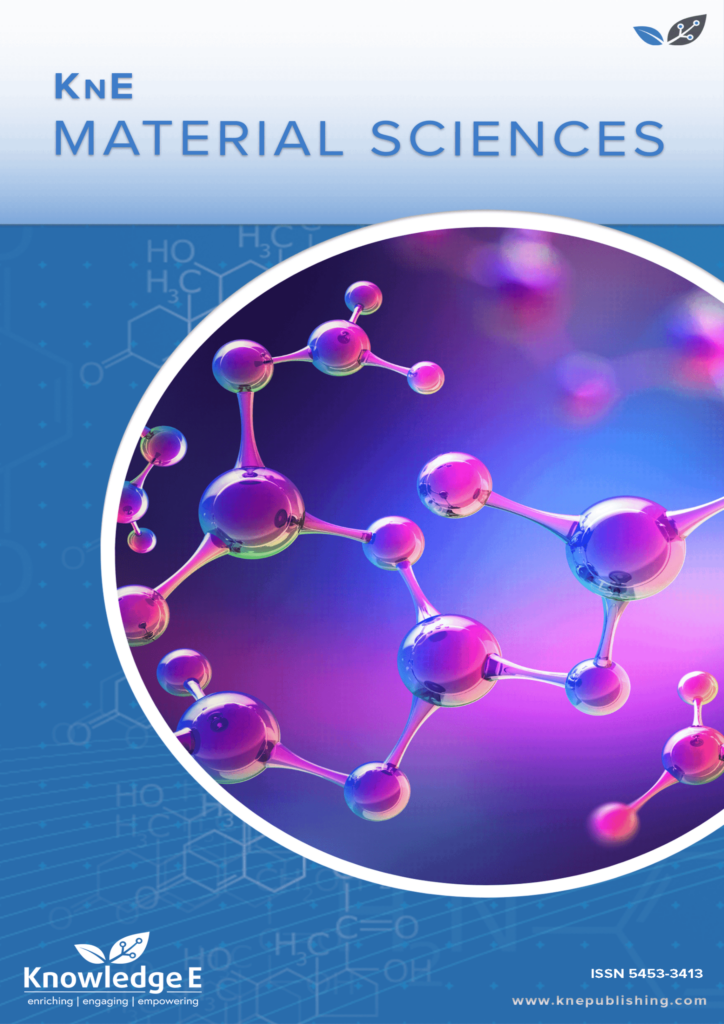
KnE Materials Science
ISSN: 2519-1438
The latest conference proceedings on physical materials, energy materials, electrical materials.
Use of Vetiver Zizinioides Floating Beds to Improve the Quality of Surface Water in a Mediterranean Climate
Published date: Aug 10 2022
Journal Title: KnE Materials Science
Issue title: 1st International FibEnTech Congress (FibEnTech21) – New Opportunities for Fibrous Materials in the Ecological Transition
Pages: 115–125
Authors:
Abstract:
Due to the negative effects of its main inflows, the water quality of Roxo stream, located in southern Portugal, an area characterized by Mediterranean climate, is degraded, causing consequences in irrigated agricultural activity. The eco technology of floating beds was used to improve the quality of this water. Three Vetiver zizinioides floating beds (3.3 m2/unit; density 40.5 plants/m2) were placed on the Roxo stream in May 2020 and the water quality was monitored until December 2020 in two places: at the floating beds location and 100 m higher up in the stream. The load mass was calculated for both sampling points and the removal rate for each parameter was monitored. The average removal rates obtained were: (i) TN = 33%; (ii) TP = 43%; (iii) COD = 44%; and (iv) Cl- = 15%. The DO level increased slightly, and the pH remained neutral. Although the water quality improved, the quality was still not high enough to be able to use the water for irrigation and to achieve good ecological status.
Keywords: Roxo stream, surface water quality, real scale, floating beds, Vetiver zizinioides
References:
[1] European Environment Agency. Climate change impacts and vulnerability in Europe. EEA:.Copanhgen; Denmark, 2012.
[2] Iglesias A, Santillán D, Garrote L. On the barriers to adaption to less water under climate change: Policy choices in Mediterranean countries. Water Resources Management. 2018, 32(15) 4819–4832. https://doi.org/10.1007/s11269-018-2043-0.
[3] Borralho T, Durão A. Qualidade da água da albufeira do roxo na dinâmica dos solos e culturas agrícolas (QARSC). Associação de Regantes do Roxo, Instituto Politécnico de Beja, Universidade de Évora. Aljustrel; Portugal, 2016.
[4] Decree Law no. 236/98. Ministry of the Environment; 1998 Aug 1.
[5] Instituto da Água, Instituto Público. Critérios para a classificação do estado das massas de água superficiais. Ministério do Ambiente, Ordenamento do Território e do Desenvolvimento Regional. Lisboa; Portugal, 2009.
[6] Durão ACR. Estratégias para a melhoria da qualidade da água na Bacia Hidrográfica do Rio Ardila [thesis, doutor em Ciências da Engenharia do Território e Ambiente]. Évora: Universidade de Évora; Portugal, 2013.
[7] Billore SK, Prashant, Sharma, JK. Treatment performance of artificial floating reed beds in an experimental mesocosm to improve the water quality of river Kshipra. Water Science and Technology. 2009;60 (11):2851-2859. https://doi.org/10.2166/wst.2009.731
[8] Kadlec RH, Wallace SD (2009). Treatment wetlands. 2nd ed. CRC PressTaylor & Francis Group; United States of America, 2009.
[9] Walker C, Tondera K, Lucke, T. Stormwater treatment evaluation of a constructed floating wetland after two years operation in an urban catchment. Sustainability (Switzerland). 2017;9(10):1–10. https://doi.org/10.3390/su9101687
[10] Kusin FM, Has SN, Nordin NA, Mohamat- Yusuff F, Ibraim ZZ. Floating vetiver island (FVI) and implication for treatment system design of polluted running water. Applied Ecology and Environmental Research. 2019;17(1):497- 510.http://dx.doi.org/10.15666/aeer/1701_497510
[11] Brix H. Plants used in constructed wetlands and their functions. Paper presented at: 1st International Seminar on the Use of Aquatic Macrophytes for Wastewater Treatment in Constructed Wetlands; 5–10 May, Lisbon, Portugal, 2003.
[12] s/n Meteorologia - Home - EDIA. Regante alqueva – Metreorologia; Empresa de Desenvolvimento e Infraestruturas do Alqueva, november, 2sd, 2021. Available from: https://regante.edia.pt/suporteaatividade/meteorologia/SitePages/Home.aspx
[13] Carvalhos T, Durão A, Almeida A, Pardal A, Parente I, Parreira A, Marques C. Utilização de leitos flutuantes para melhoria da qualidade de massa de água superficial -O caso da Ribeira do Roxo. Paper presented at: 15º Congresso da Água. 22-26 março, Lisboa, Portugal, 2021.
[14] American Public Health Association. Standard methods for examination of water and wastewater. Washington, DC: American Public Health Association; 2012.
[15] Vargas R, Pankova EI, Balyuk SA, Khasankhanova PV, editors. Handbook for saline soil management. 1st ed. Food and Agriculture Organization of the United Nations and Lomonosov Moscow State University; Rome, Italy, 2018.